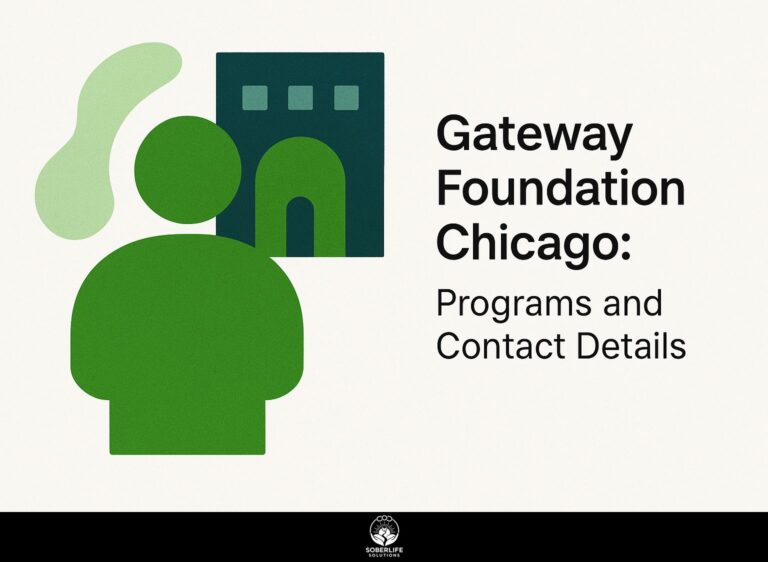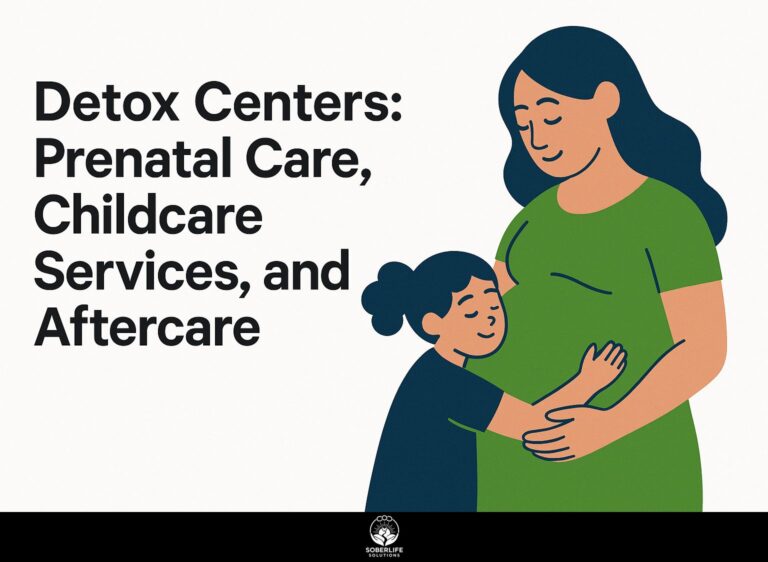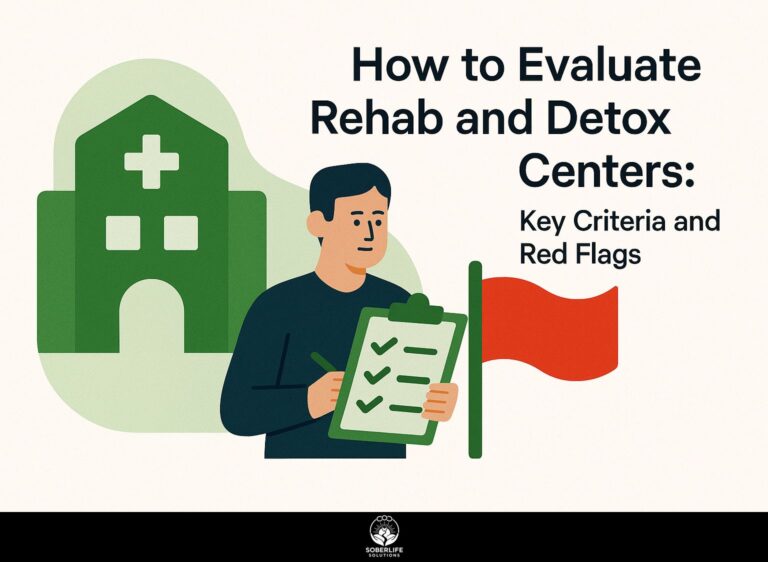Detox Centers for Adolescents: Challenges and Importance
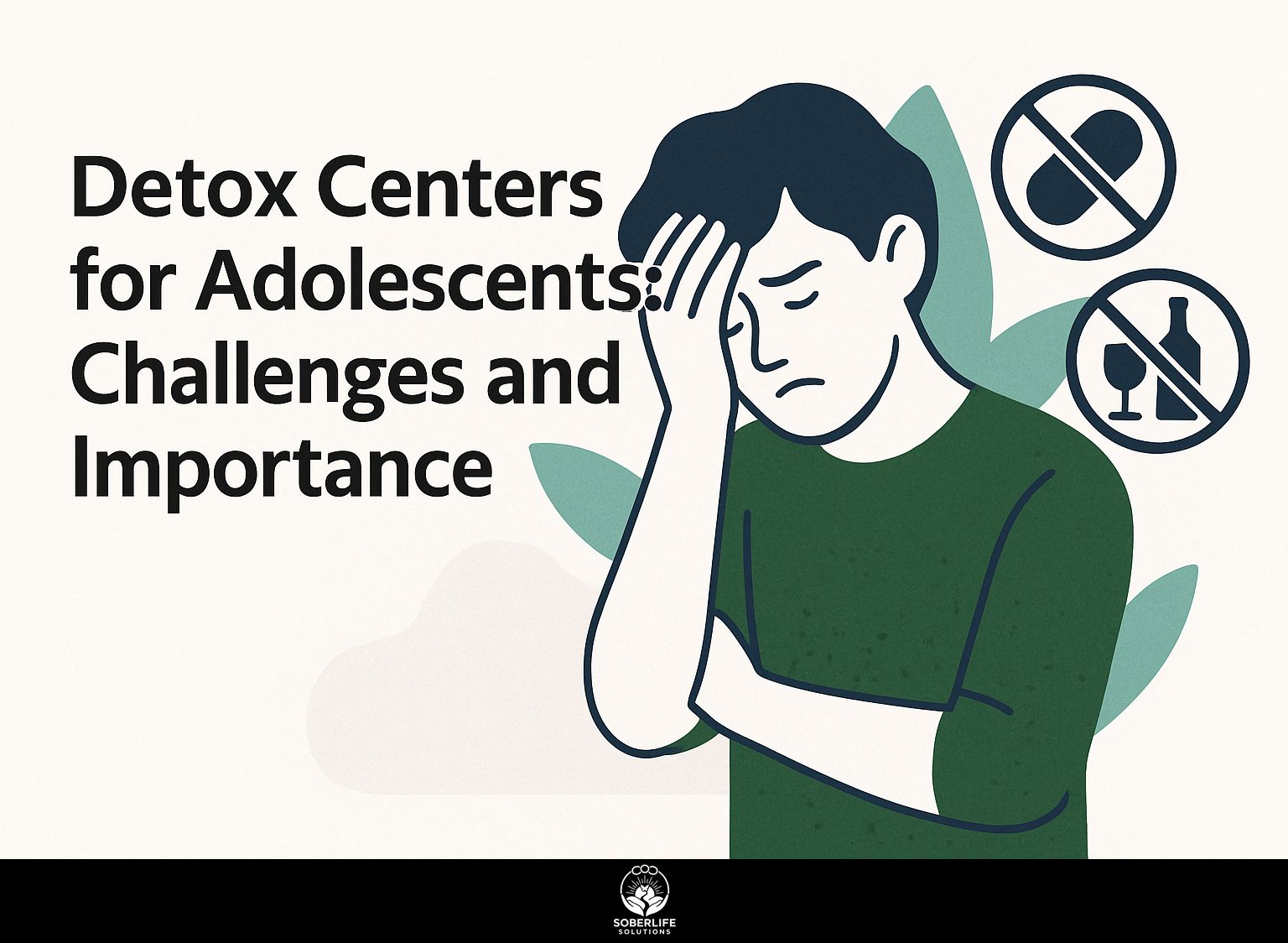
The need for effective adolescent substance abuse treatment is very important now, especially due to the high rates of suicide among teenagers. Detox centers for teenagers deal with specific difficulties, but their role in providing effective treatment plans through a combined method is extremely important. This article discusses the importance of special care designed for young people, explaining the challenges these centers face and the important help they provide for better health outcomes.
Key Takeaways:
Definition and Purpose
Detox centers are medical places that help teenagers with substance abuse by controlling withdrawal symptoms and keeping them safe.
These centers provide a structured environment where medical professionals offer 24/7 monitoring and support.
For example, teenagers may go through detox with medical help, using drugs like buprenorphine to reduce opioid withdrawal symptoms. According to Wikipedia, drug detoxification is a critical first step in overcoming addiction and involves medical and therapeutic interventions.
Therapeutic activities-such as cognitive-behavioral therapy (CBT) sessions-help build coping strategies.
Statistics show that 80% of teenagers in detox programs report better involvement in aftercare programs, highlighting the need for strong post-detox support.
This dual approach of medical care and psychological support significantly increases the chances of recovery.
Overview of Substance Use in Adolescents
Current statistics reveal that 1 in 5 adolescents engage in substance use, often leading to serious psychiatric comorbidities such as anxiety and mood disorders.
The National Institute on Drug Abuse states that using drugs early can damage brain growth, leading to lasting thinking issues and a greater risk of addiction later on.
For instance, adolescents who begin using marijuana before age 15 are more likely to develop anxiety disorders, creating a cycle that complicates treatment. According to recent analysis by KFF, trends indicate a significant impact on adolescent mental health from early substance use.
Teaching programs for middle school students have been shown to work well. Schools that use lessons covering the dangers of drug use see student involvement drop by 30%. If interested in more proactive strategies, contingency management techniques can offer additional support in reinforcing student recovery.
Addressing this issue thoroughly is important for improving growth in teenagers.
Challenges Faced by Detox Centers
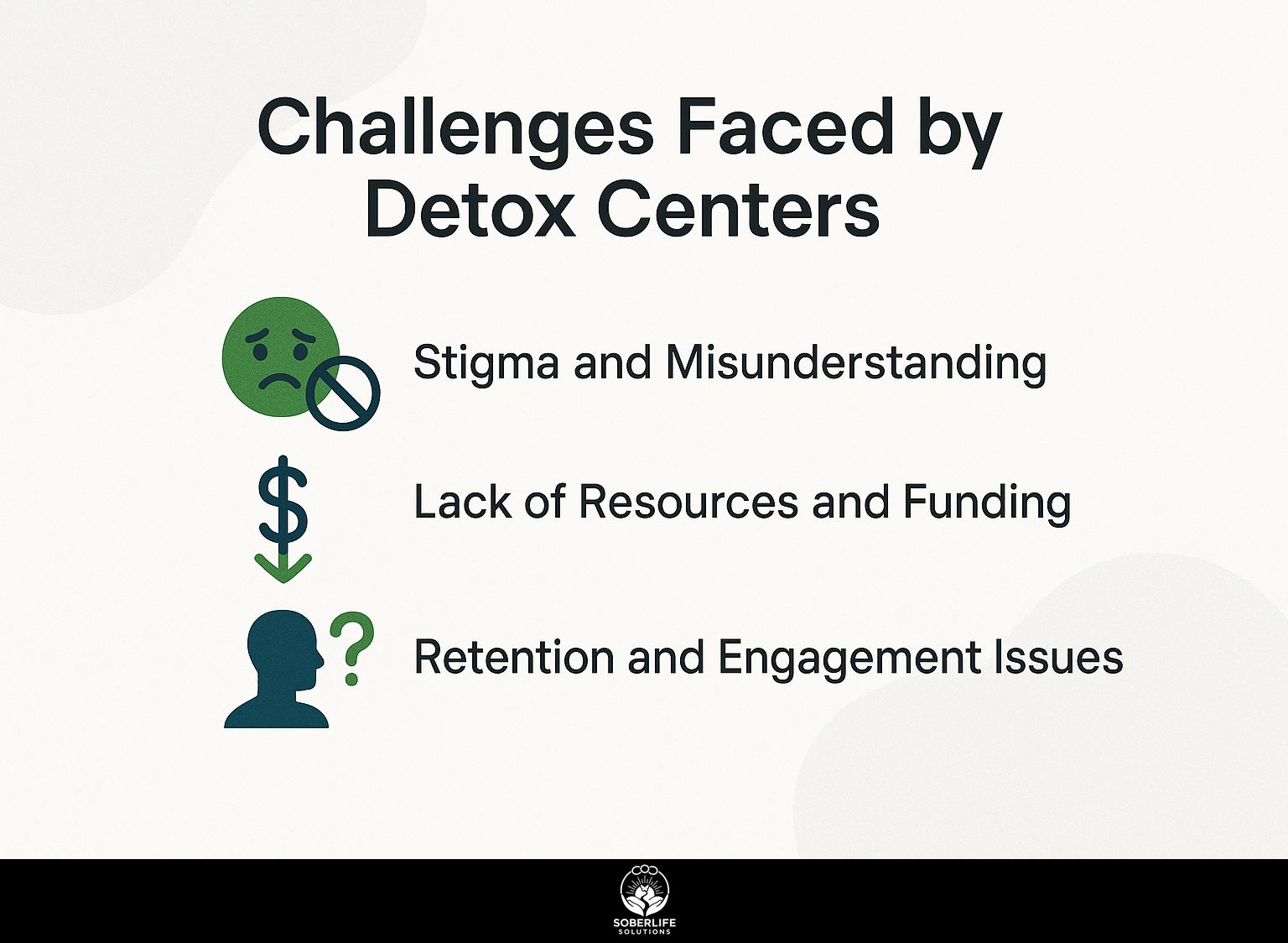
Detox centers face many challenges that make it difficult to provide good care for teenagers.
Stigma and Misunderstanding
Negative opinions about drug use can prevent families from getting the help they need. Research shows that 34% of parents delay treatment due to concerns about judgment.
To combat this stigma effectively, communities can implement education programs that inform both youth and parents about the realities of substance use disorders. These programs might include workshops, online materials, and support groups that share information and feature stories from families who have successfully gone through treatment.
For example, local groups might organize gatherings where families come together to share their experiences, creating a space for mutual support. This method can encourage people to ask for help, which decreases loneliness and false information about teenage drug use. As recommended reading, Hopkins Medicine provides extensive insights into reducing the stigma of addiction, which can be incredibly beneficial for these community initiatives.
Lack of Resources and Funding
Many adolescent detox centers operate with limited funding, resulting in reduced resources that affect the quality of care and treatment outcomes.
This funding shortfall undermines access to essential services, with reports indicating that over 50% of centers lack adequate financial support.
To help with this problem, detox centers can look into different ways to get money, like state grants that often focus on youth services, and donations from local groups.
Establishing partnerships with local businesses can provide both financial aid and resources.
By using different ways to get funding, centers can improve service quality and provide better treatment results for teenagers who require help.
Retention and Engagement Issues
Retention rates in adolescent detox programs can be as low as 50%, primarily due to lack of engagement and motivation techniques.
To improve participation in these programs, think about using motivational interviewing methods that increase participants’ confidence in their abilities. This method helps teenagers explain their reasons for wanting change and increases their motivation.
Building a strong therapeutic relationship through regular, clear communication can create trust and honesty. Regularly scheduled feedback sessions can also keep teens involved and accountable.
Encouraging peer support through group sessions allows for shared experiences, which can reinforce commitment to treatment and improve overall retention rates.
Importance of Specialized Care
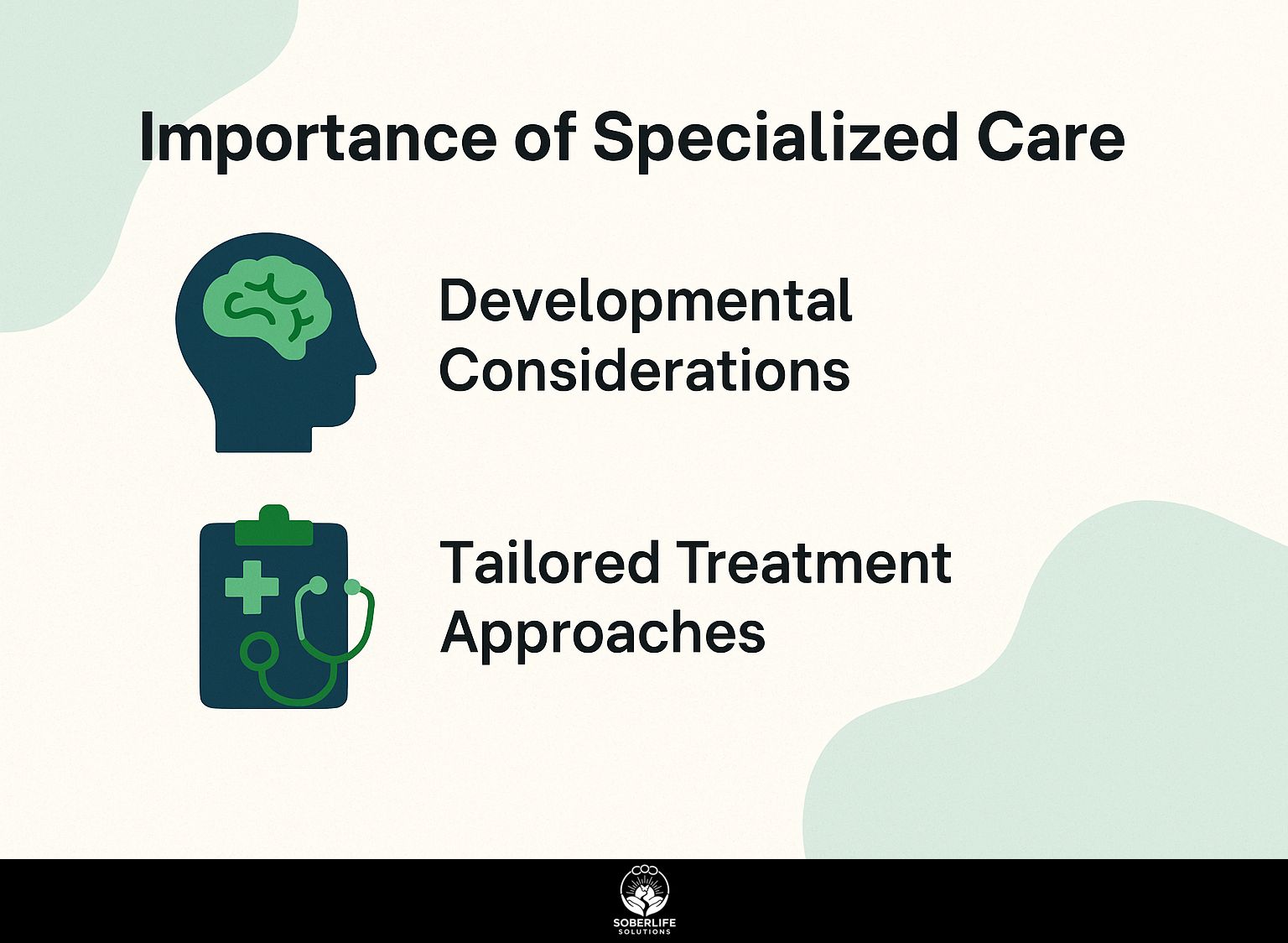
Specialized treatment that addresses the specific growth needs of teenagers is essential for effective results.
Developmental Considerations
Knowing how the teenage brain develops is important for creating effective treatment plans for substance use problems.
Adolescents experience unique developmental challenges, with cognitive and emotional growth impacting their treatment. Evidence-based practices, such as Motivational Interviewing and Cognitive Behavioral Therapy, can effectively engage young people.
For example, Motivational Interviewing (MI) increases personal drive by addressing conflicting emotions. Adding family therapy to treatment can build support systems that are important for recovery.
Adjusting interventions to fit the social and psychological environment, including peer pressure and personal growth, leads to a more complete method. These strategies tackle substance use and build emotional strength in teenagers.
Tailored Treatment Approaches
Specific therapy methods, like cognitive behavioral therapy (CBT) and family behavior therapy, successfully help adolescents with substance use issues.
Among these strategies, motivational interviewing has shown a 70% success rate in engaging youth by enhancing their intrinsic motivation for change.
Contingency management, which provides rewards for positive behaviors, boasts a 50-60% effectiveness in encouraging abstinence.
Multidimensional family therapy helps improve family relationships and increases successful treatment results for up to 75% of participants.
Employing a combination of these methods can maximize recovery chances, creating a more supportive environment for adolescent patients.
Family Involvement in Detox Programs
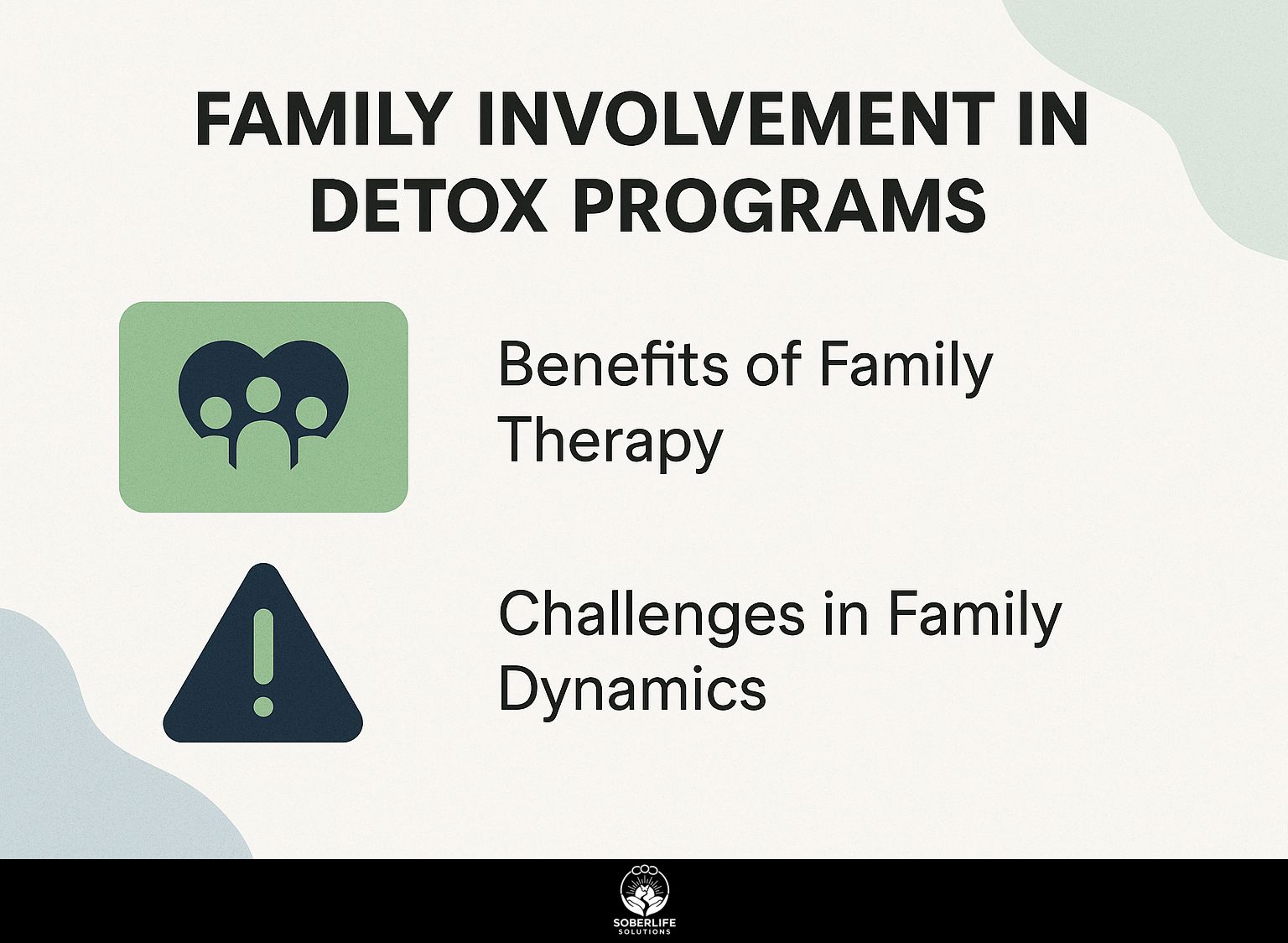
When family members take part in detox programs, it greatly improves the success of the treatment and helps maintain recovery over time.
Worth exploring: How to attend A.A. meetings with family members
Benefits of Family Therapy
Family therapy can increase recovery success rates by 30%, underscoring the importance of inclusive treatment approaches.
Adding family therapy to detox programs helps heal both the person and their family relationships affected by addiction.
For example, a study from the Journal of Substance Abuse Treatment found that families who participated in therapy showed a 50% reduction in relapse rates.
Effective methods include regular family therapy sessions using evidence-based practices like Motivational Interviewing and Cognitive Behavioral Therapy.
Tools such as virtual conferencing platforms facilitate participation, ensuring that support can be provided regardless of geographical constraints.
Challenges in Family Dynamics
Problems within family relationships can make detox programs less effective, as poor communication often leads to more relapses.
To address these challenges, families should consider implementing structured communication skills training. Using methods like active listening and ‘I’ statements can greatly improve communication and lower disagreements.
Having a counselor or therapist for regular family meetings lets everyone express their feelings in a secure and effective manner. Setting aside time to talk with family about recovery builds a supportive environment.
Tools like therapy apps (e.g., BetterHelp) can provide ongoing support and resources, helping families manage their relationships better.
Aftercare and Long-Term Support
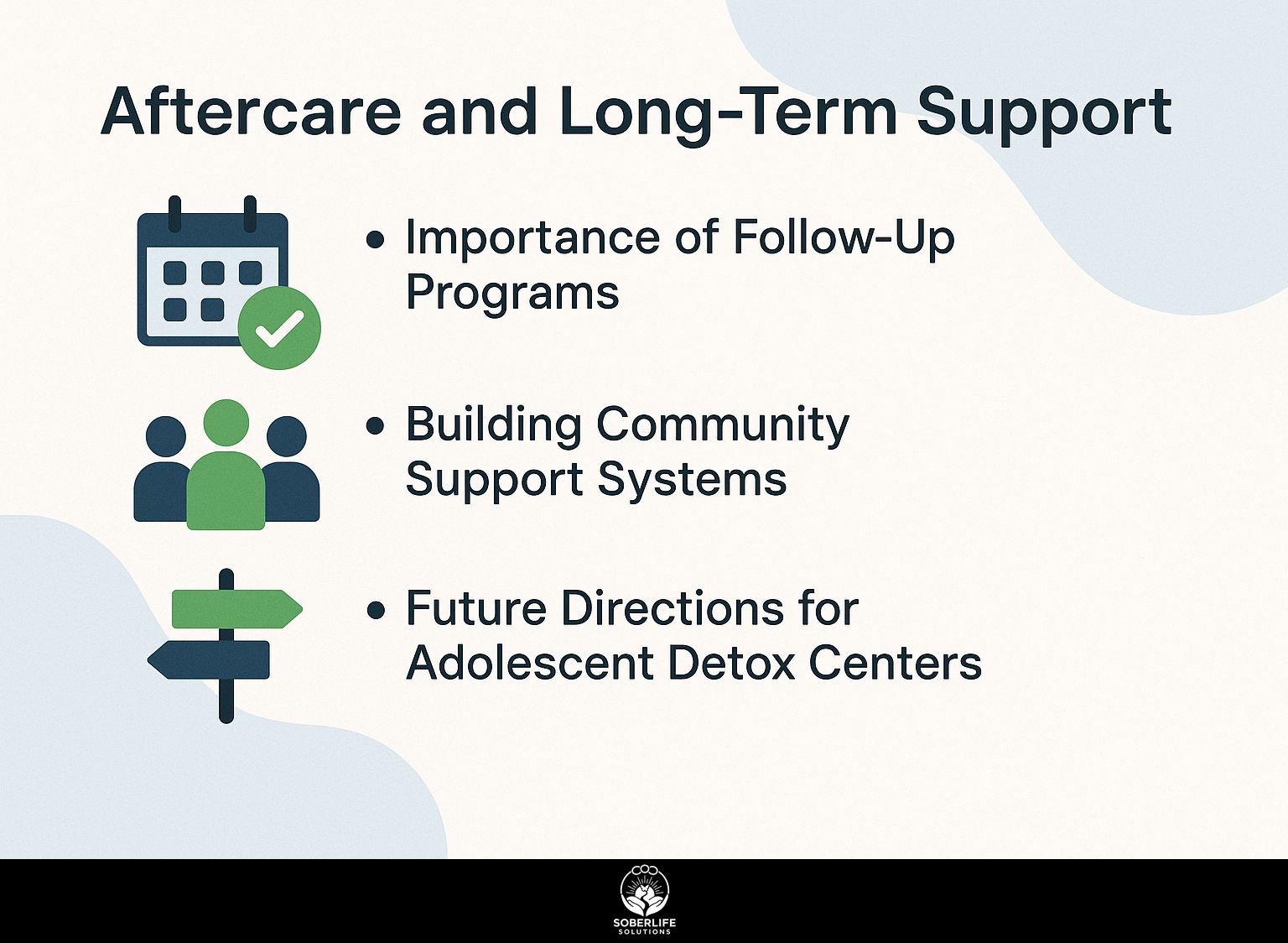
Ongoing support services are essential for maintaining recovery, providing continued help to teenagers after detox.
Importance of Follow-Up Programs
Follow-up programs can reduce relapse rates by up to 40%, showcasing their importance in the recovery process.
For a successful follow-up plan, include:
- Regular meetings
- Access to support groups
- Ongoing education on ways to cope
For instance, weekly phone calls with a recovery coach can maintain accountability, while monthly group meetings encourage peer support.
Utilizing apps like Sober Grid can further facilitate connection among participants.
By bringing these parts together, you form a complete aftercare plan that deals with urgent issues and supports long-term healing. Success depends on regular involvement and changing strategies based on each person’s progress.
Building Community Support Systems
Creating strong community support systems is important for teenagers in recovery, giving them needed social connections and resources.
Programs such as SMART Recovery and Al-Anon Youth offer structured support groups for young individuals. These organizations facilitate group meetings where adolescents can share experiences and strategies for coping.
Local projects such as youth mentorship programs build personal relationships that encourage responsibility and self-awareness.
Using platforms like Meetup or local Facebook groups, teens can find community events focused on wellness, creating an informal support network that improves their path to recovery.
Upcoming Steps for Teen Detox Centers
Plans for adolescent detox centers involve using both traditional and new treatment methods together to achieve better results.
These centers can adopt therapies like cognitive-behavioral therapy (CBT) to address underlying behavioral issues, alongside mindfulness practices such as yoga and meditation for stress management.
Working with local groups can improve support systems, giving teenagers places they can feel safe and chances to join in fun activities.
Using technology like telehealth services offers ongoing support and counseling, making it easier for people to access treatment.
By focusing on overall well-being, these centers can more effectively connect with teens and support long-term recovery.
Frequently Asked Questions
What are detox centers for adolescents and why are they important?
Detox centers for adolescents are specialized facilities that offer medical and psychological support to teenagers struggling with substance abuse. These centers are important because they provide a safe and controlled environment for adolescents to undergo detoxification and receive support for their addiction.
What are some challenges faced by detox centers for adolescents?
One of the main challenges faced by detox centers for adolescents is the high relapse rate among young individuals. Adolescents are at a vulnerable stage in their lives and may struggle with maintaining sobriety after leaving the center. Also, there might be limited resources and money for these centers, making it hard to provide full treatment for all teenagers who need it.
Are there different types of detox treatments for adolescents?
Yes, there are different kinds of detox treatments for teenagers, such as medical detox, whole-body detox, and detox with medication help. Every treatment can work better for different people. The center should make sure the treatment plan fits what the teenager needs and likes.
Can adolescents receive mental health support at detox centers?
Yes, detox centers for adolescents often offer psychological support in addition to medical treatment. Many young individuals struggling with substance abuse may also have underlying mental health issues that need to be addressed. These centers can provide therapy and counseling to help adolescents cope with their addiction and any co-occurring mental health disorders.
How do I know if my adolescent needs to go to a detox center?
If you think your teenager is having trouble with drug or alcohol use, reach out to a detox center for professional help. Some signs to look out for include changes in behavior, sudden mood swings, and a decline in academic or social performance. The staff at the center can assess your adolescent’s needs and recommend the appropriate level of treatment.
How can I support my adolescent during and after their stay at a detox center?
Parents and guardians need to be involved in their teenager’s recovery process. This can include attending family therapy sessions, offering emotional support, and creating a stable and drug-free environment at home. Keep learning about addiction and help your teen stay sober.

